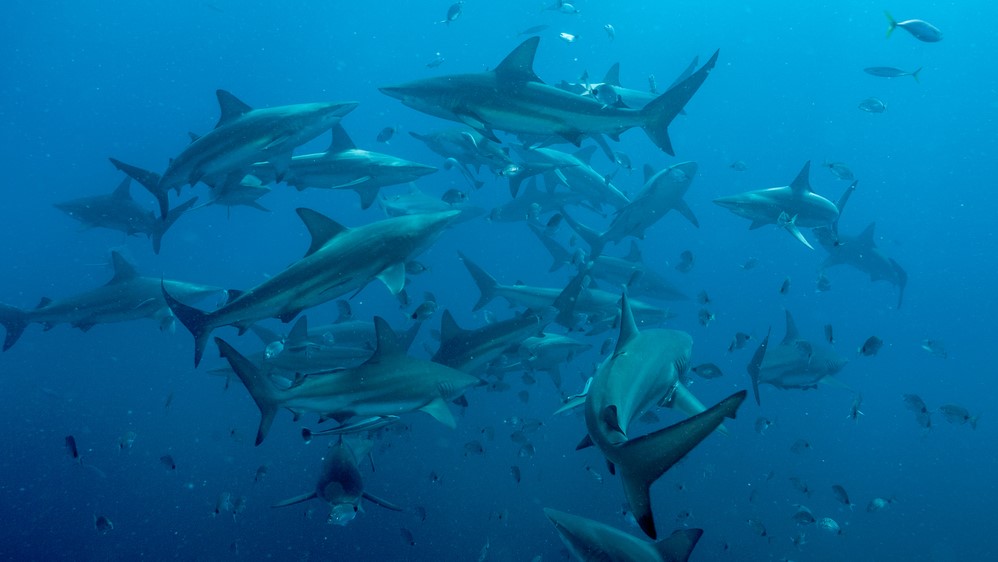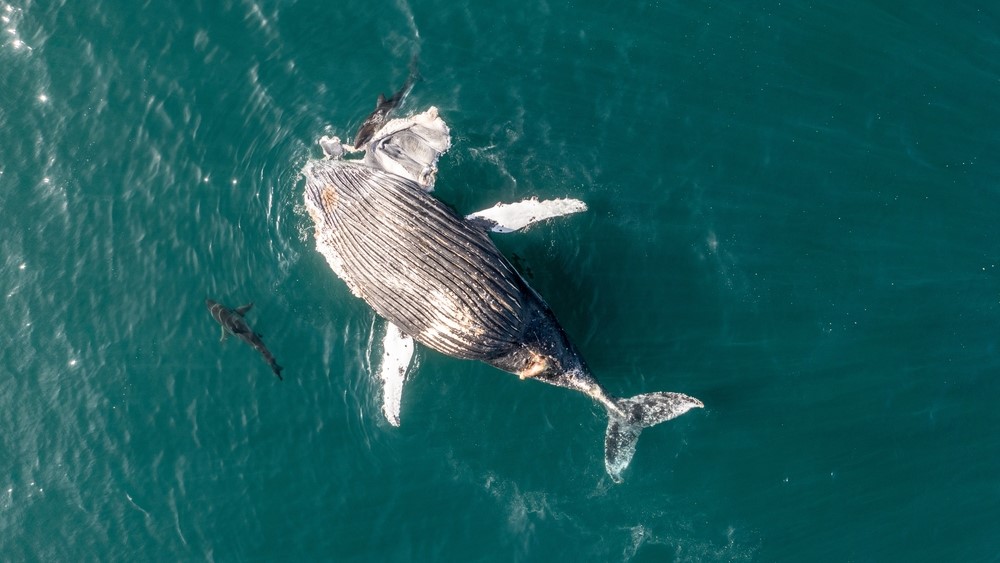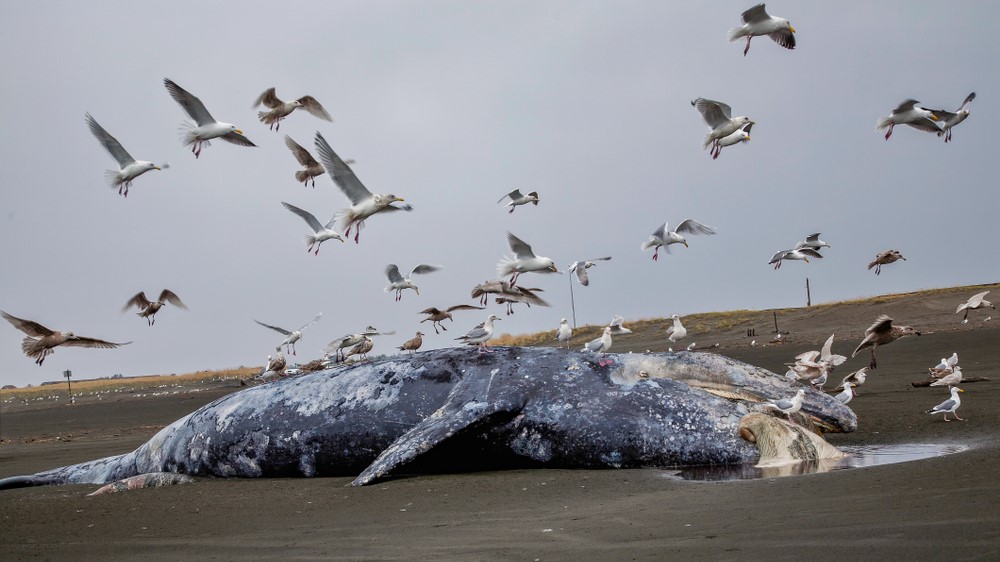Spiraling vortex of 60 sharks rips apart a dead humpback whale in mesmerizing new video
There were potentially even more sharks in the swarm.

Hypnotic drone footage shows a swarm of reef sharks ripping apart the floating remains of a dead humpback whale along the Australian coastline. During the feeding frenzy, at least 60 sharks can be seen swirling in a spiral around the blubbery carcass, but eyewitnesses say there may have been more than 100 sharks taking advantage of the whale buffet.
Tourists John Cloke and Indy Crimmins captured video of the gruesome aquatic feast in waters off Norman's Beach near Albany in Western Australia. After returning from a morning fishing trip, Cloke saw "this big thing bobbing in the water with birds around it" and sent his drone to investigate, according to ABC News.
The resulting footage, which was shared on the pair's Instagram page on May 16, showed dozens of sharks circling a floating humpback whale (Megaptera novaeangliae) that appeared to be around 49 feet (15 meters) long. As the drone's camera zoomed out, more sharks emerged on the perimeter of a mesmerizing vortex, waiting for an opportunity to dart in and grab a bite. "At one point there's probably about 100 sharks around the carcass," Cloke told ABC News. "We couldn’t count them all."
A post shared by INDY & JOHN | LAP OF AUS (@jindys_travels)
A photo posted by on
Such detailed views of sharks and other scavengers feeding on dead whales at the ocean surface are rare. But experts say that the event itself is actually quite common.
"As someone who works in the area of shark research, it's very interesting footage but not that unusual," Steve Taylor, a shark researcher at the Department of Primary Industries and Regional Development in Australia, told ABC News. However, the footage in the new video is "beautiful," he added.
Related: Dead whale in the Mediterranean probably 'one of the largest' ever found
In August 2021, a team of marine biologists unexpectedly discovered eight great white sharks (Carcharodon carcharias) viciously tearing apart a dead humpback whale off the Massachusetts coast. In 2017, a sequence from the BBC's Blue Planet II series also showed a number of different sharks scavenging the remains of whale that was killed by a ship.
Sign up for the Live Science daily newsletter now
Get the world’s most fascinating discoveries delivered straight to your inbox.

Most cetaceans float on the surface after they die because their bodies fill up with gases as they decompose. A 2020 study, published in the journal Frontiers in Marine Science, found that the amount of gas produced plays a big role in determining if a whale or dolphin carcass will be washed ashore. Larger, blubber-rich cetacean species, such as humpback whales, float for longer periods of time — sometimes more than a week — which makes them ideal targets for scavengers like sharks and seabirds.
In the recent footage of the feeding frenzy in Australia, it is unclear which shark species were involved, but they were probably smaller reef sharks, likely including bronze whalers (Carcharhinus brachyurus), Taylor told ABC News.
"A whale carcass is a good feeding opportunity for many different species of sharks in our coastal waters," he said.

However, a sea surface feeding frenzy is just the first step in a long process of decomposition that feeds dozens of marine species dwelling at different ocean depths. After a whale carcass eventually sinks, drifting beyond the reach of surface-swimming sharks, it reaches the seafloor and becomes what is known as a "whale fall."
At the sea bottom, the whale's remaining flesh is stripped from the bones by diverse seafloor scavengers, including octopuses, eels, crabs and deep-sea sharks, according to the Ocean Conservancy. Even after the whale has been reduced to a skeleton, its bones are then slowly devoured by chemical-munching microbes and worms, in a process that can take more than a decade, according to the National Oceanic and Atmospheric Administration.
Originally published on Live Science.

Harry is a U.K.-based senior staff writer at Live Science. He studied marine biology at the University of Exeter before training to become a journalist. He covers a wide range of topics including space exploration, planetary science, space weather, climate change, animal behavior and paleontology. His recent work on the solar maximum won "best space submission" at the 2024 Aerospace Media Awards and was shortlisted in the "top scoop" category at the NCTJ Awards for Excellence in 2023. He also writes Live Science's weekly Earth from space series.










